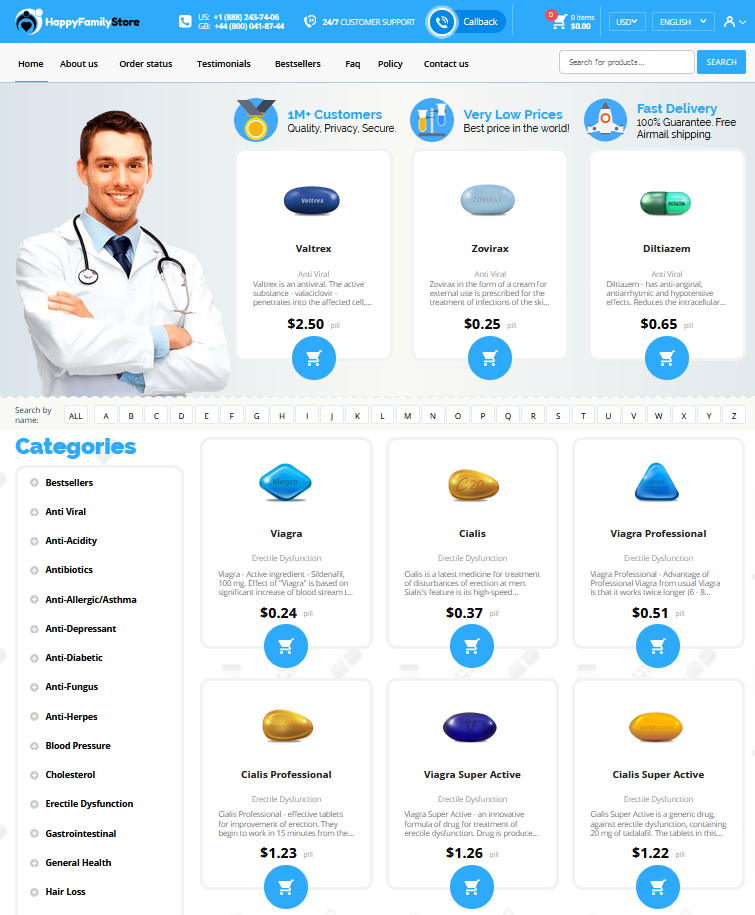Contents » + -
To Buy Cephalexin Online Visit Our Pharmacy ↓
 Cephalexin Vs. Other Antibiotics: a Comparative Study
Cephalexin Vs. Other Antibiotics: a Comparative Study
The Origins and Uses of Cephalexin
Emerging from the dynamic world of pharmacology, cephalexin has become a staple in combating bacterial infections. Its inception traces back to the drive-thru innovations of the 1960s, when scientists pursued the development of first-generation cephalosporins. Cephalexin, with its broad-spectrum efficacy, is often seen as a dependable comp in the arsenal of generics, fighting everything from skin infections to urinary tract nuisances.
| Year | Development Milestone |
|---|---|
| 1967 | Cephalexin was first synthesized |
| 1970 | Approved by FDA for medical use |
| 1980s | Became widely prescribed for various infections |
In modern-day clinics, it frequently fills scripts thanks to its effective action against both Gram-positive and Gram-negative bacteria. This makes it a favored choice in the busy pharm world, where efficacy and history go hand in hand, offering practical solutions with minimal side effects. Its recognition in the medical community has only grown, making it a go-to in the antibiotic lineup.
Mechanisms of Action in Cephalexin Versus Other Antibiotics

Cephalexin, a beta-lactam antibiotic, works by interfering with the bacteria's cell wall synthesis, making those pesky pathogens vulnerably defenseless. Comparatively, macrolides like azithromycin, often found in that ubiquitous Z-Pack, inhibit protein synthesis within bacterial cells. Both strategies aim at bacterial elimination but execute their tasks distinctively. When your pham tech hands you a script for cephalexin, it's essentially setting up a barricade against bacterial build-up, akin to fortifying defenses. Teh magic of beta-lactams lies in their ability to halt bacterial reproduction stat, whereas others might look for a different angle, such as attacking bacterial ribosomes. The choice boils down to infection type and severity.
Comparing Efficacy of Cephalexin with Common Alternatives
Cephalexin's role in battling bacterial infections is well-documented, often shining in "Script" comparisons with other antibiotics. While alternatives like amoxicillin or azithromycin are also prescribed, cephalexin is prized for its efficacy against staphylococcal and streptococcal infections. When "comping" the effects, it's noticable how cephalexin is a reliable choice for skin and soft-tissue infections, though some protocls may prefer broader-spectrum antibiotics.
However, comparing clinical outcomes can be tricky due to differences in strain sensitivities and infection sites. In many cases, cephalexin's targeted approach is a benefit, though the decision ultimately boils down to "Sig" considerations outlined by the prescriber. Yet, one cannot ignore the need for "Meds Check" to ensure optimal treatment and avoid resistance.
Side Effects: Cephalexin Compared to Other Antibiotics

When diving into the world of antibiotics, we encounter an array of possible side effects, some of which are immediately noticable. Cephalexin often carries typical script warnings such as nausea, diarrhea, and abdominal pain, much like many other medications in its class. While Cephalexin shares this list with other antibiotics such as amoxicillin or azithromycin, its unique pharmacological properties may grant it a lower incidence of severe allergic reactions, making it a suitable choice for many.
However, it’s crucial to consider that like any prescription, the experience varies widely among patients. Some might find Cephalexin easier to tolerate, while others experience a slight "hangover" effect—lingering fatigue or headaches. In the realm of antibiotic prescriptions, no one-size-fits-all rule exists. Teh art of prescribing antibiotics involves weighing multiple factors, such as patient-specific side effect profiles and drug interactions, to achieve optimal outcomes. Understanding these nuances allows healthcare providers to tailor their theraputic approach more effectively.
Resistance Patterns in Cephalexin and Other Antibiotics
In the ever-evolving landscape of antibiotic resistance, cephalexin continues to play a notable role. While it's generally effective against Gram-positive bacteria, resistance is becoming more concerning. Similar to other antibiotics, overuse and inappropriate scripts can drive resistance, a phenomenon not confined to a single compound medication. Stat measures are crucial to prevent resistance from reaching alarming levels.
| Antibiotic | Common Resistance Factors | |------------|---------------------------| | Cephalexin | Overuse, misuse in common infections | | Penicillin | Wide use, historic first antibiotic | | Amoxicillin | Resistance in respiratory infections | | Ciprofloxacin | Broad-spectrum, overprescribed |
The continuous emergence of resistant strains challenges the efficacy of cephalexin and others. Prescribers must attentively follow the sig to adapt treatment strategies proactively. Understanding the resistance patterns and emphasizing responsible prescribing practices is essential to curb this pressing issue. Attention to detail, even at a drive-thru pharmacy, is imperative to maintaining cephalexin's effectiveness and to acommodate evolving medical needs.
Practical Considerations for Prescribing Cephalexin over Others
When a doctor, or "candyman" as some might humorously call them, scribes an Rx for Cephalexin, they often consider its straightforward sig and dosage regimen, especially for uncomplicated bacterial infections. The ease of dosage reduces the pill burden on patients, making adherence more likely. While some generics may cause sticker shock, Cephalexin is affordable, mitigating rejections from insurance. Unlike meds requiring a fridge, this elixir remains stable at room temperature, easing logistics for patients. If an individual has a known allergy to CII medications, Cephalexin often serves as a safer comp, offering effective results without immediate complications. Prescribing it often balances efficacy and convenience.